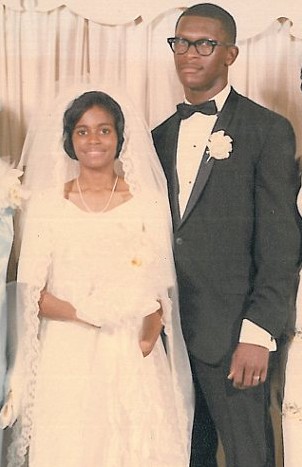
Fine, but who's the woman in the back? Is she the Belgian au pair whom Dad will eventually have an affair with?
Time to debate the merits of another 2012 investing buzzword. It seems half our personal finance blogger contemporaries are incorporating stocks with high dividend yields into their portfolios. So what’s a dividend yield stock and should I care? Should I be interested? Should I take my money out of T-bills and start investing in dividend yield stocks immediately?
Most blue-chip stocks pay dividends. Yes, you get money just for doing the company the favor of purchasing its stock. If that sounds unduly generous, you’re forgetting that purchasing the stock doesn’t just make you an investor. It makes you an owner of the company. You’re the person in charge, however minimal your particular influence is. En masse, the owners can demand payment – a reward for the company’s success, if you will. Single proprietors and partners enjoy their companies’ profits, so why shouldn’t the person who owns one millionth of Google? Sure, it might make more sense to invest the profits back in the company, but as an investor, that’s not necessarily your concern. Putting money back in the company might, or might not, result in an increased stock price down the road. Paying a dividend will benefit you immediately (or at the end of the quarter, or whenever the company calculates it.)
Dividend yield is just a company’s annual dividend divided by its stock price. A company that pays a quarterly 50¢ dividend and whose stock is trading at $10 has a dividend yield of 20%.
If you think it’s insane to give 20% of the company’s value back to the owners, you’re right. At that rate, assuming static growth, within 5 years the company would evaporate from largesse. As a rule, 3% is considered high.
CPI Corp (NYSE: CPY) (it stands for Consumer Programs Incorporated) is the company that Sears farms out its infamous Portrait Studios to. Walmart, too. If there’s a picture somewhere of you and your siblings smiling awkwardly on a carpeted white stool in front of an anodyne gray background, then there’s a good chance your family has done business with CPI.
You’re not going to believe this, but those department store studios aren’t as successful as they were in the 1980s. Frankly, they were always kind of a holdover from the days of daguerreotypes, back when cameras were luxury items. Today, when any iPhone can capture pictures indistinguishable from the ones Sears Portrait Studio takes with an Olympus E-1, CPI is about to go the way of Borders Books & Music and Solyndra. Which is reflected in the stock price, which fell from $30.48 in December of 2010 to $1.59 today. The company’s market cap is $11.2 million. Just put it out of its misery already.
Yet it still pays a quarterly dividend of 25¢, which means a dividend yield of 63%. Which is like a baseball player with a batting average of .833. Unsustainable. No other company currently has a dividend yield of higher than 20% (That’s American Capital Agency, a real estate investment trust.)
Dividends are a drug, hard for investors to wean themselves off once they’ve become accustomed to a certain dose. A history of quarterly 25¢ payments means that if CPI lowers its dividend, it’ll prompt those few investors who are still around to jump ship and sink the stock price once and for all. The New York Stock Exchange threatened CPI with delisting, unless the price somehow sextuples.
The rationale for buying high dividend yield stocks is that you’ll presumably receive lots of cash per dollar spent on the stock itself. However, it’s easy to forget that just because you can divide one quantity into another, doesn’t mean you should. Look at the opposite situation: if the stock you buy turns out to have a low dividend yield, that means it has a high price, and how is that bad?
Seeing as dividends are cash, that means they derive from cash flow. Which brings us to the least heralded of the major financial statements, the cash flow statement.
Check out total cash flow from operating activities. CPI brought in $39,067,000 via that method last year. And paid out 17% of it as dividends. That’s hardly excessive. Coca-Cola pays out 43%. But it reminds us how stock price – an arbitrary number that represents nothing more than a collective opinion among buyers and sellers in the marketplace – has little to do with the concrete accounting entry that a dividend payment is.
A history of regular dividends is a welcome thing. A history of high dividends relative to stock price means nothing. It can’t mean anything, because a truly high dividend yield can’t last for any length of time.
Update: CPI got sued last week. Class action. The plaintiffs argue that the company was doing worse than management was letting on. CPI had to change the terms under which it borrows money, which means no more dividend, which means its dividend yield has fallen 63 percentage points. Isn’t this fun?
This article is featured in:
**The Carnival of Financial Camaraderie #19: The Super Edition**




